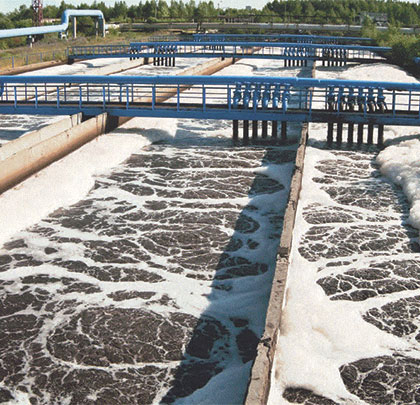Enclosure cooling units offer a straightforward active-cooling technique for pump control panels, however, they are not necessarily the best choice for all installation locations. Dirt, dust, and other airborne contaminants can clog condenser coils; while corrosive gasses in the environment can lead to premature failures.
On the other hand, air-to-water heat exchangers can satisfy the same requirements without circulating ambient air within the housing, thereby eliminating the clogging and corrosion problems associated with airborne contamination.
A common threat to organic wastewater handling and treatment systems is the presence of hydrogen sulfide gas. Not only is this gas toxic to humans, but it also contributes heavily to corrosion problems in pipes, structures, instrumentation, and electrical systems. Lift stations and pumping systems are particularly vulnerable as H2S sour gas readily attacks copper used in wires, electrical contacts, and cooling units used on motor control centers (MCC’s).
Enclosure cooling is vital for MCC’s containing the variable frequency drives (VFD’s) that are used to maintain efficient operation by conserving energy through regulating the speed at which pumps operate. Since VFD’s generate a considerable amount of heat, it is necessary to employ an active enclosure cooling technique in order to keep VFD’s operating within acceptable temperature limits. The absence of effective enclosure cooling will quickly allow VFD’s to overheat, shut down, or even catastrophically fail. In addition to being an economic loss, such outages disrupt production and affect the efficiency of plant operations.
Effective electrical enclosure cooling for environments where H2S gas is present must utilize a closed loop technique to ensure that sour gas is not introduced into the enclosure where it could harm wiring, electrical connections, switches, and other components. In fact, for many installations, it is advantageous to deploy an air or nitrogen purge system which creates a positive pressure within the enclosure in order to keep undesirable ambient elements, including sour gas, outside of it. As opposed to an open loop system that uses fans to draw ambient air into and push heat out of the enclosure, a closed loop system maintains isolation of the ambient air and permits the NEMA rating of the electrical enclosure to be maintained. Examples of closed loop cooling equipment for electrical enclosures include cooling units (also known as enclosure air conditioners) and air-to-water heat exchangers.
Cooling units offer the advantage of a being a plug and play solution—they simply hang onto the outside of the enclosure and are connected to power already available inside the enclosure. However, these compressor-based refrigeration systems consume a fair amount of energy and require periodic maintenance. Additionally, to endure the sour gas environment, exposed copper pipes and condenser coils must be treated with a conformal coating which is not necessarily standard. Over time, the need to clean condenser coils-which may require partial disassembly of the cabinet-can lead to scratched paint, compromised coatings, and eventual corrosion.
Air-to-water heat exchangers offer several advantages making them the preferred method for closed-loop, electrical enclosure cooling. Acquisition and operating expenses are significantly lower than those of a compressor-based cooling unit. Additionally, the air-to-water heat exchanger is virtually maintenance free and since there is no ambient air circulation within the unit, there is no risk of H2S sour gas corrosion to internal components.
There are, however, two challenges with acquiring and implementing air-to-water heat exchangers. First, the units must be specified as the solution of choice with the MCC or pump system integrator and second, the units must be connected to a viable source of clean water or coolant to circulate through the heat exchanger coil. Another viable implementation is to consider retrofitting cooling units with air-to-water heat exchangers.
This modification can be readily accomplished without difficulty since some units share the same enclosure cut-out. For dissimilar cutouts, an adaptor plate may be required to reduce the size of the opening.
SUMMARY
In summary, the use of water cooling for keeping vital components within control panels and electrical enclosures operating within acceptable temperature limits is an economical and maintenance-free approach worthy of consideration. Energy savings, longer service life, reduced upkeep, and lower acquisition costs are some of the obvious benefits gained by utilizing air-to-water heat exchangers for such requirements. In locations where H2S sour gas is present, such as in wastewater treatment plants and sewage lift stations, the added benefit of total isolation of components, which could become corroded in such environments, is an advantage that should not be overlooked.
About the author:
Jon LaPorta is vice president marketing at Pfannenberg, Inc., a global manufacturer of thermal management, liquid cooling solutions, and signaling technologies. Its enclosure thermal management products help some of the largest companies worldwide stay cool and safe, protecting, and keeping electronic equipment running to avoid costly downtime. For more information, visit www.pfannenbergusa.com.
____________________________________________
MODERN PUMPING TODAY, March 2017
Did you enjoy this article?
Subscribe to the FREE Digital Edition of Modern Pumping Today Magazine!
![]()





